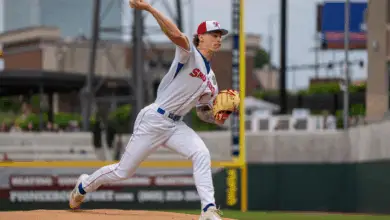
MLB Changes, Lost Year Continuing to Impact How Cubs Farm System Functions
As someone who watches the minor leagues almost every day, it’s quite clear that the Cubs system has changed quite a bit in 2021. In addition to the obvious realignment of leagues and levels, more subtle shifts are having an impact as well. Between the canceled season, shortened draft, roster cap, and the elimination of short-season ball has created a whole new world within which to develop players.
Despite maintaining four of the same affiliates, it’s really not the same system at all and it might take everyone involved a year or two to adjust to how the new MiLB is going to work. Let’s take a look at the three major factors shaping the function of the farm.
1. MLB Changes MiLB
MLB eliminating short-season baseball directly impacted the Cubs’ two full-season Class A teams. Players would be expected to jump from the Arizona Rookie League up to Myrtle Beach (Low-A) with no buffer league in between.
That short-season league used to be extremely important for players to transition from rookie ball or the college ranks to the A level. Young international players would get their first taste of facing more advanced pitchers while college players got to experience professional baseball for the first time.
Prospects that would’ve been at Eugene are at Myrtle Beach a full year ahead of schedule. And you can tell, especially when it comes to hitters who look overwhelmed at times against more experienced college pitchers. Even top pick Ed Howard, who missed a month due to injuries, has struggled mightily at the plate.
It has not fazed Yohendrick Pinango or Pablo Aliendo to skip what would basically be two levels. Both of those players are thriving with their quick bats and ability to use the whole field, but the majority of young Latin players are battling to get above .200 after almost two months of the season.
Three run jack for my guy Pablo Aliendo pic.twitter.com/FaaDND5J0L
— Todd ⚾️🐻🦌 (@CubsCentral08) June 20, 2021
It would not be surprising in this new MiLB structure to see players spend up to two years at Low-A before making the jump to High-A. Another option would be to spend more time in Arizona before out to an affiliate.
2. Talent Acquisition
Last year’s MLB Draft consisted of just five rounds, after which the Cubs also signed 13 undrafted free agents to complete their so-called “draft “class. The Cubs went pitching heavy and only signed a few position players in free agency.
Right now, those position players are having trouble adjusting while some of the undrafted pitchers have made it all the way to Double- and Triple-A in less than half a year. Those who’ve followed the organization’s pitching development, or lack thereof, know that kind of upward mobility is not common for the Cubs.
Reliever Ben Leeper is already in Iowa after dominating at Tennessee. Lefty Scott Kobos, who is on the 7-Day IL, has yet to allow a run at either Myrtle Beach or South Bend. Kobos looked to be on his way to Tennessee before his undisclosed injury.
Kobos and the disappearing changeup pic.twitter.com/kJDYYrprQp
— Todd ⚾️🐻🦌 (@CubsCentral08) June 13, 2021
This year’s draft is set for June 11-13 and will consist of 20 rounds, with undrafted free agents in play afterward. The Cubs usually bring in about 30 new players every year, but where they are assigned for the remainder of the summer is yet to be determined. It used to be that the college guys would go to Eugene, the high school guys to Mesa, and a few high achievers made it to South Bend.
In addition to short-season ball being out of the question, MLB has capped stateside rosters at 180 total players. We will discuss this dilemma in the next section.
3. Development and Injuries
It’s hard to recall a season with so many injuries across all levels of the system following a year in which there were no games and everyone had to work out basically on their own. Many of the Cubs’ top prospects haven’t played an inning this year. Brailyn Marquez, Jack Patterson, Riley Thompson, and Kohl Franklin are all shut down for the time being. They are just the tip of IL iceberg.
God Speed, Jack Patterson pic.twitter.com/9fE4PcPNqL
— Todd ⚾️🐻🦌 (@CubsCentral08) May 1, 2021
The Cubs have been mining the independent/partner leagues this year to make up deficits in the organization, but soon they will have a whole new set of players from the draft and free agency. That 180-player cap — which includes players on both the 7-and 60-Day IL — means a lot of roster adjustment will be taking place across the system. While some creative solutions are in order, odds are there will be older and underperforming players whose time with the Cubs will end.
A year from now, things should be much more settled in terms of how the system is going to function. This season is more like working the kinks out to improve for the future, especially at the lower levels, but it could get pretty bumpy come July and August.

